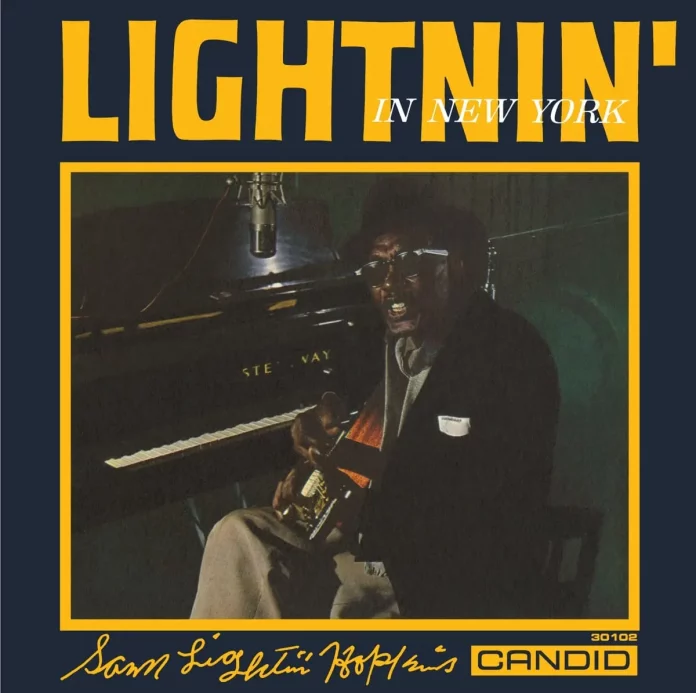Lightnin’ Hopkins came alone to New York in October 1960. He was there to play a series of concerts and night clubs, but he was also reluctant to be “re-discovered”. He didn’t feel comfortable playing to young, white audiences in venues he didn’t know.
His material was often dark in nature and he felt he couldn’t perform the way those songs demanded. Consequently, he would opt for a quick and instant response from the audience by performing bawdy songs, tales of fickle women and general clowning.
His debut in New York was at Carnegie Hall (sharing the same bill with Peter Seeger and Joan Baez). In a review of the concert, Nat Hentoff wrote: “[Lightnin’] made some contact with the audience, again avoiding his harshest songs and focusing instead on women, those lost and those invited back. The applause was loud but dutiful.”
Concerts at the Village Gate and other smaller venues proved more successful and showed that white audiences could relate to more of what he referred to as his “hurting songs”. It was therefore, a more relaxed Lightin’ who walked into the studio on the 15 November to record Lightnin’ In New York.
The session went well with Hopkins accompanying himself on guitar. This was Lightnin’ at his most authentic and original. No frills and no recording pyrotechnics. The engineer was Bob d’Orleans who did the best thing imaginable – he kept out of the way.
At the end of the session, Hopkins was so pleased with the way it had gone, he asked to add some piano. This wasn’t done by way of overdub. Instead, Lightnin’ sat at the piano, worked his guitar so that his hands were free for the keyboard but could also switch instantly to the other instrument.
Take It Easy was the first track to be recorded with both guitar and piano and the effect is powerful. The Trouble Blues is perhaps the most haunting and personal song on the album and is introduced by Hopkins as reflective of his current mood. Wonder Why is a much lighter affair but still packed with emotion. Mighty Crazy is a traditional 12-bar track but shows Hopkins’ ability to play, sing and talk to fabulous effect. Lightnin’s Piano Boogie is a masterful piano solo and Mister Charlie harks back to the great blues tradition of storytelling.
If you like your blues simple, then this album is well worth revisiting. It is one of the better sessions Hopkins recorded in the 1960s and thanks to some unintrusive production by Nat Hentoff and engineer Bob d’Orleans, it captures a genuine blues master at ease with himself and his material.
Discography
Take It Easy; Mighty Crazy; Your Own Fault, Baby, To Treat Me The Way You Do; I’ve Had My Fun If I Don’t Get Well No More; The Trouble Blues; Lightnin’s Piano Boogie; Wonder Why; Mister Charlie (41.32)
Hopkins (v, g, p). Nola Penthouse Sound Studios, New York, 15 November 1960.
Candid CCD3010
















